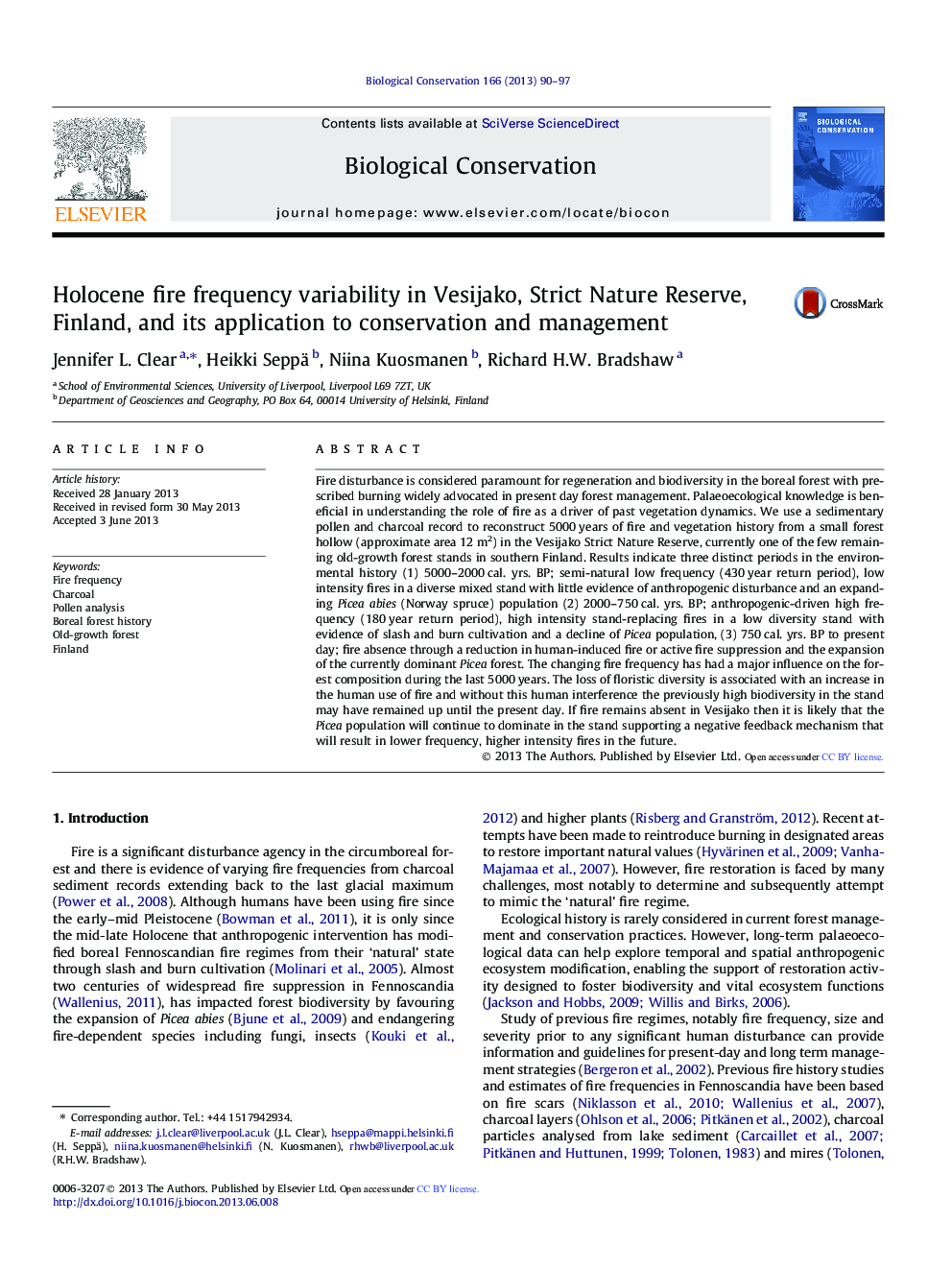| کد مقاله | کد نشریه | سال انتشار | مقاله انگلیسی | نسخه تمام متن |
|---|---|---|---|---|
| 6300775 | 1617935 | 2013 | 8 صفحه PDF | دانلود رایگان |

- A 5000Â year history of forest dynamics with a shifting fire return interval.
- A diverse mixed deciduous forest stand replaced by Picea abies.
- Anthropogenic increase in fire frequency and recent fire suppression.
- Palaeoecology as an informative tool for conservation and management policies.
Fire disturbance is considered paramount for regeneration and biodiversity in the boreal forest with prescribed burning widely advocated in present day forest management. Palaeoecological knowledge is beneficial in understanding the role of fire as a driver of past vegetation dynamics. We use a sedimentary pollen and charcoal record to reconstruct 5000Â years of fire and vegetation history from a small forest hollow (approximate area 12Â m2) in the Vesijako Strict Nature Reserve, currently one of the few remaining old-growth forest stands in southern Finland. Results indicate three distinct periods in the environmental history (1) 5000-2000Â cal. yrs. BP; semi-natural low frequency (430Â year return period), low intensity fires in a diverse mixed stand with little evidence of anthropogenic disturbance and an expanding Picea abies (Norway spruce) population (2) 2000-750Â cal. yrs. BP; anthropogenic-driven high frequency (180Â year return period), high intensity stand-replacing fires in a low diversity stand with evidence of slash and burn cultivation and a decline of Picea population, (3) 750Â cal. yrs. BP to present day; fire absence through a reduction in human-induced fire or active fire suppression and the expansion of the currently dominant Picea forest. The changing fire frequency has had a major influence on the forest composition during the last 5000Â years. The loss of floristic diversity is associated with an increase in the human use of fire and without this human interference the previously high biodiversity in the stand may have remained up until the present day. If fire remains absent in Vesijako then it is likely that the Picea population will continue to dominate in the stand supporting a negative feedback mechanism that will result in lower frequency, higher intensity fires in the future.
Journal: Biological Conservation - Volume 166, October 2013, Pages 90-97